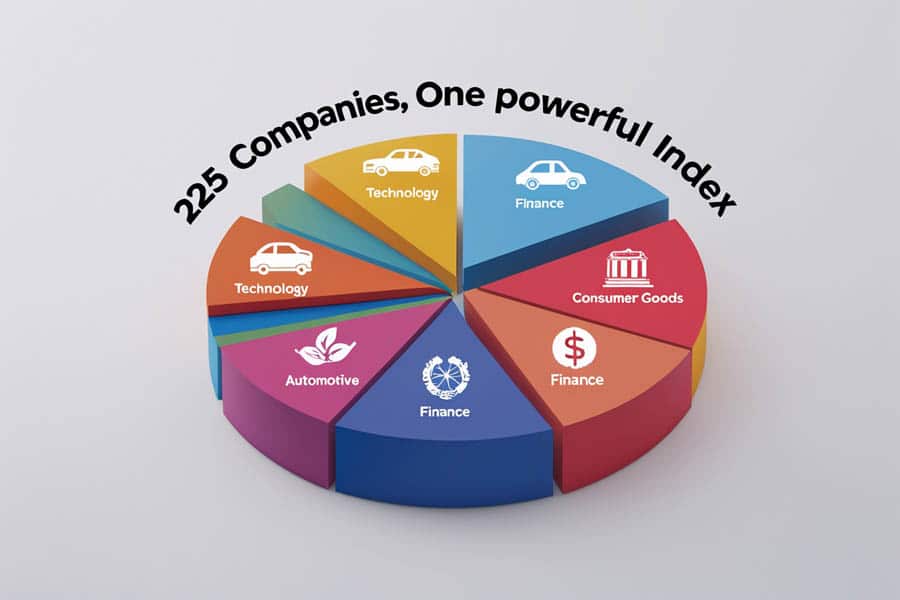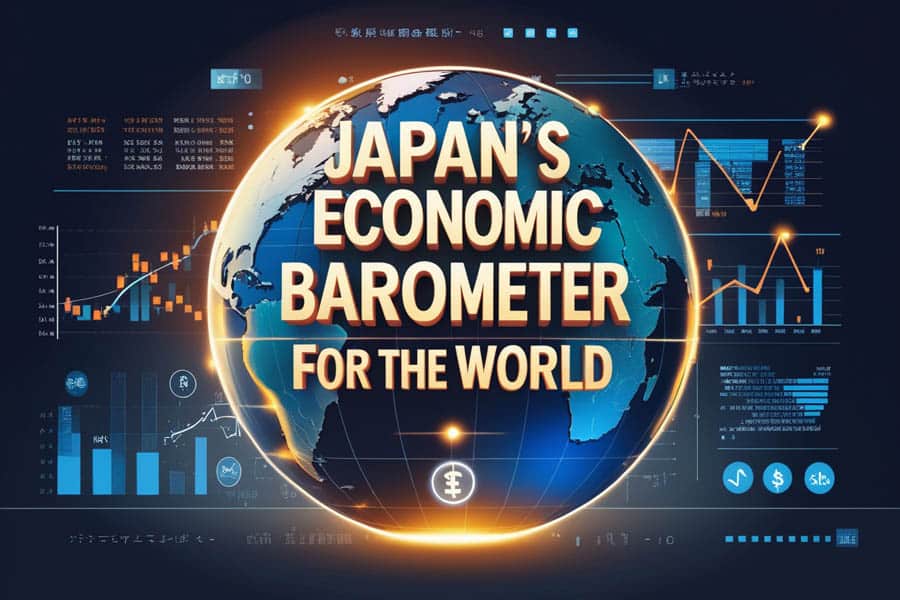Imagine having the power to track the heartbeat of Japan’s economy with a single index. For investors, forex trading brokers, and financial enthusiasts, the JPN225 Index is that powerful tool. Also known as the Nikkei 225, this index is Japan’s premier stock market benchmark, representing the performance of 225 of the country’s most influential companies. Traders working with a regulated forex broker often turn to the JPN225 Index as an essential indicator to gauge the overall health of Japan’s economy and market sentiment.

Whether you’re a seasoned trader or a beginner exploring the world of online forex brokers, understanding the JPN225 Index is essential for making informed investment decisions. In this comprehensive guide, we’ll dive deep into what the JPN225 Index is, its historical significance, how it’s calculated, and why it matters in the global financial landscape. By the end, you’ll have a clear understanding of how this index can be a game-changer for your portfolio.
Introduction to the JPN225 Index
The JPN225 Index, commonly referred to as the Nikkei 225, is a price-weighted index that tracks the performance of 225 large, publicly traded companies in Japan. Established in 1950, it is one of the oldest and most respected indices in Asia. The index serves as a barometer for the Japanese economy and is closely watched by investors worldwide. Its significance extends beyond Japan, influencing global markets and investment strategies.

For those new to the concept, a stock market index is a measurement of a section of the stock market, calculated from the prices of selected stocks. The JPN225 Index is unique because it focuses exclusively on Japan’s top companies, providing a snapshot of the country’s economic health. Whether you’re a forex trading broker or an individual investor, understanding this index can help you navigate the complexities of the Japanese market.
Historical Background and Significance
- Launch and Early Years: The Nikkei 225 was launched by the Nihon Keizai Shimbun (Japan Economic Newspaper) in 1950. It was designed to provide a clear picture of Japan’s post-war economic recovery and growth.
The index quickly became a symbol of Japan’s economic resurgence, reflecting the country’s rapid industrialization and technological advancements during the 1950s and 1960s.
- The Bubble Era: In the late 1980s, the JPN225 Index reached its all-time high of 38,957.44 in December 1989, during Japan’s economic bubble. This period was marked by skyrocketing asset prices and excessive speculation.
However, the bubble burst in the early 1990s, leading to a prolonged period of economic stagnation known as the “Lost Decade.” The index plummeted, and Japan’s economy faced significant challenges.
- Resilience and Recovery: Despite the economic downturn, the JPN225 Index has shown remarkable resilience. It has weathered global financial crises, including the 2008 recession, and continues to be a key indicator of Japan’s economic health.
Today, the index remains a vital tool for investors and economists, offering insights into Japan’s economic trends and corporate performance.
Read More: Analysis of International Markets in Forex
What Does JPN225 Represent?

The JPN225 Index includes 225 of the most influential companies in Japan, spanning various sectors such as technology, automotive, finance, and consumer goods. Some of the well-known companies in the index include Toyota, Sony, and SoftBank. The diversity of sectors represented makes the index a comprehensive reflection of the Japanese economy.
Understanding the composition of the JPN225 Index is crucial for investors. The index provides a broad overview of Japan’s economic landscape, making it a valuable tool for those looking to invest in Japanese equities. Whether you’re interested in technology, manufacturing, or finance, the JPN225 Index offers exposure to a wide range of industries.
Sector Representation and Market Coverage
- Technology Sector: Companies like Sony and Panasonic dominate this sector, reflecting Japan’s leadership in innovation and electronics.
The technology sector holds a significant weight in the index, making it a key driver of its performance. Japan’s advancements in robotics, artificial intelligence, and consumer electronics are well-represented in the JPN225.
- Automotive Industry: Toyota and Honda are prominent players in this sector, showcasing Japan’s global dominance in automobile manufacturing.
The automotive industry is a cornerstone of Japan’s economy, and its performance significantly impacts the JPN225 Index. Innovations in electric vehicles and hybrid technology are also reflected in this sector.
- Financial Services: Mitsubishi UFJ Financial Group and Sumitomo Mitsui Financial Group are key representatives of Japan’s robust financial sector.
The financial sector plays a crucial role in the index, providing insights into Japan’s banking and insurance industries. Economic policies and interest rate changes often influence this sector’s performance.
- Consumer Goods: Companies like Fast Retailing (Uniqlo) highlight Japan’s strong presence in the global retail market.
The consumer goods sector reflects Japan’s domestic consumption trends and its ability to compete in international markets. This sector’s performance is closely tied to consumer confidence and spending habits.
Read More: what is china 50
How is the JPN225 Index Calculated?
The JPN225 Index is calculated using a price-weighted methodology, which means that companies with higher stock prices have a more substantial impact on the index’s value. The formula for calculating the index is relatively straightforward: the sum of the stock prices of the 225 companies is divided by a divisor, which adjusts for stock splits and other corporate actions.
This price-weighted approach is different from other indices that use market capitalization weighting, such as the S&P 500. In a market-cap-weighted index, companies with larger market capitalizations have a greater influence on the index’s value. The JPN225 Index’s methodology makes it unique and provides a different perspective on the Japanese market.
The formula for calculating the JPN225 index is as follows:
JPN225 Index = (Sum of Stock Prices of 225 Companies) / Divisor
The divisor is a proprietary number that is adjusted over time to maintain the index’s continuity despite corporate actions like stock splits or mergers. Without this divisor, such actions would artificially inflate or deflate the index value.
Role of Market Capitalization and Price Weighting
Unlike other indices that use market capitalization weighting, the JPN225 Index relies on stock prices. This approach can lead to a higher influence of companies with higher stock prices, regardless of their market capitalization. This unique methodology sets the JPN225 apart from other major indices like the S&P 500 or FTSE 100.
For example, a company with a high stock price but a relatively small market capitalization can have a significant impact on the JPN225 Index. This can lead to higher volatility but also offers the potential for significant gains. Understanding these nuances is crucial for investors considering the index.
Why is the JPN225 Index Important?
The JPN225 Index is a vital benchmark for the Japanese stock market, providing insights into the country’s economic health. It is also a popular tool for global investors looking to diversify their portfolios. The index’s performance is often seen as a reflection of Japan’s economic stability and growth potential.

For forex trading brokers and investors, the JPN225 Index offers a way to gain exposure to the Japanese market without having to invest in individual stocks. This can be particularly useful for those looking to diversify their portfolios and reduce risk. The index’s global significance makes it a valuable tool for investors worldwide.
Global Economic Impact and Investor Relevance
As one of the leading indices in Asia, the JPN225 has a significant impact on global markets. Investors around the world use the index to gauge the performance of Japanese equities and make informed investment decisions. Its relevance extends beyond Japan, influencing global economic trends and investment strategies.
For example, a strong performance by the JPN225 Index can signal confidence in the Japanese economy, leading to increased investment in Japanese assets. Conversely, a decline in the index can indicate economic challenges, prompting investors to adjust their strategies. Understanding these dynamics is crucial for anyone involved in global finance.
Comparison with Other Major Indices
When compared to other major indices like the S&P 500 or FTSE 100, the JPN225 Index stands out due to its price-weighted methodology and focus on Japanese companies. While the S&P 500 is market-cap weighted and includes a broader range of sectors, the JPN225 offers a concentrated view of Japan’s top companies.
This unique focus makes the JPN225 Index a valuable tool for investors looking to gain exposure to the Japanese market. While other indices provide a broader view of global markets, the JPN225 offers a deep dive into Japan’s economic landscape. Understanding these differences can help investors make more informed decisions.
Unique Characteristics of the JPN225 Index
The JPN225 Index’s price-weighted approach and its focus on Japanese companies give it unique characteristics. This methodology can lead to higher volatility but also offers the potential for significant gains. Understanding these nuances is crucial for investors considering the index.
For example, the JPN225 Index’s focus on top-performing companies means that it can provide insights into Japan’s economic trends. This can be particularly useful for investors looking to capitalize on growth opportunities in the Japanese market. By understanding the unique characteristics of the JPN225 Index, investors can make more informed decisions.
Read More: What is India 50 Index
Investing in the JPN225 Index

There are several ways to invest in the JPN225 Index, including ETFs, mutual funds, and derivatives. Each method has its own set of risks and rewards, and investors should carefully consider their options before committing capital. Diversifying your portfolio with exposure to the JPN225 can provide a hedge against market volatility and offer growth opportunities.
For those new to investing, ETFs (Exchange-Traded Funds) are a popular option. These funds track the performance of the JPN225 Index and can be bought and sold like stocks. Mutual funds are another option, offering a more managed approach to investing in the index. Derivatives, such as futures and options, provide more advanced investment strategies but come with higher risks.
Risks and Rewards Associated with Investing in the Index
Investing in the JPN225 Index comes with its own set of risks, including market volatility and currency fluctuations. However, the potential rewards can be substantial, especially for long-term investors. Understanding these risks and rewards is essential for making informed investment decisions.
For example, the JPN225 Index’s price-weighted methodology can lead to higher volatility, making it a riskier investment compared to market-cap-weighted indices. However, this volatility also offers the potential for significant gains. By understanding these risks and rewards, investors can make more informed decisions about whether to invest in the JPN225 Index.
How to Trade the JPN225 Index for Forex Traders
For forex traders, the JPN225 index presents unique opportunities for diversification and potential profit. While not directly trading currencies, forex brokers often offer Contracts for Difference (CFDs) on stock indices like the JPN225. This allows traders to speculate on the price movements of the index without owning the underlying assets. To effectively trade the JPN225 as a forex trader, consider these key aspects:
- CFD Trading: Utilize CFDs offered by forex brokers to speculate on the JPN225’s price fluctuations.
- Technical and Fundamental Analysis: Apply your existing skills to identify trading opportunities based on charts and economic data.
- Economic Data Monitoring: Pay close attention to Japanese economic releases and Bank of Japan announcements, as these significantly impact the index.
- JPY Correlation: Understand the inverse relationship between the JPY and the JPN225; a weaker Yen often boosts the index.
- Risk Management: Implement robust risk management strategies, including stop-loss orders, due to the JPN225’s volatility.
- Broker Specifications: Familiarize yourself with your broker’s specific CFD contract details, including leverage and trading hours.
By understanding these elements, forex traders can strategically incorporate the JPN225 into their trading portfolios.
Historical Performance of the JPN225 Index
The JPN225 index has witnessed a series of significant milestones and discernible trends throughout its history, reflecting the economic and social changes that have shaped Japan. Key historical periods include:
- Post-War Growth: In the 1950s and 1960s, the JPN225 Index reflected Japan’s rapid economic recovery and industrialization.
During this period, Japan emerged as a global economic powerhouse, and the index grew steadily, reflecting the country’s economic progress.
- The Bubble Era: The late 1980s saw the index reach its peak during Japan’s economic bubble, driven by excessive speculation and asset price inflation.
However, the bubble burst in the early 1990s, leading to a prolonged period of economic stagnation and a significant decline in the index.
- Global Financial Crisis: The 2008 financial crisis had a profound impact on the JPN225 Index, causing it to plummet as global markets collapsed.
Despite the crisis, the index showed resilience and gradually recovered, reflecting Japan’s ability to adapt to global economic challenges.
- Recent Trends: In recent years, the JPN225 Index has shown steady growth, driven by Japan’s strong corporate sector and economic policies.
Advancements in technology and shifts in global trade have also influenced the index’s performance, making it a key indicator of Japan’s economic health.
Factors Influencing the JPN225 Index

The movements of the JPN225 index are influenced by a complex interplay of various factors, making it a dynamic and sometimes challenging indicator to predict with certainty. Understanding these influencing factors is key to interpreting market movements and making informed investment decisions.
- Economic Indicators: GDP growth, unemployment rates, and inflation are key economic indicators that influence the JPN225 Index.
Positive economic data can boost investor confidence and drive the index higher, while negative data can lead to declines.
- Corporate Earnings: The financial performance of companies in the index, such as Toyota and Sony, directly impacts its value.
Strong earnings reports can lead to increases in the index, while weak earnings can cause declines.
- Geopolitical Events: Global trade tensions, political instability, and other geopolitical events can affect the JPN225 Index.
For example, trade disputes between the U.S. and China can impact Japan’s export-driven economy and influence the index’s performance.
- Bank of Japan Policies: Monetary policies, such as interest rate changes and quantitative easing, play a significant role in shaping the index’s performance.
The Bank of Japan’s decisions can influence investor sentiment and impact the index’s value.
Future Outlook for the JPN225 Index
Experts predict that the JPN225 Index will continue to play a crucial role in the global economy. Emerging trends, such as advancements in technology and shifts in global trade, could influence the index’s future performance. While challenges remain, the index’s resilience and growth potential make it a valuable investment opportunity.
For example, advancements in technology, such as artificial intelligence and robotics, could drive growth in the JPN225 Index. Similarly, shifts in global trade, such as the rise of emerging markets, could impact the index’s performance. By staying informed about these trends, investors can better navigate the complexities of the Japanese market.
Predictions and Expert Opinions on Its Future Performance
Many experts believe that the JPN225 Index will continue to grow, driven by Japan’s strong corporate sector and economic policies. However, potential challenges, such as global economic uncertainties, could impact its performance. Staying informed about these trends is essential for investors.
For instance, some experts predict that the JPN225 Index could reach new highs in the coming years, driven by strong corporate earnings and economic growth. However, others caution that global economic uncertainties, such as trade tensions and geopolitical risks, could pose challenges. By understanding these predictions, investors can make more informed decisions about whether to invest in the JPN225 Index.
Pro Tips for Advanced Traders
- Use Technical Analysis: Tools like moving averages and trend lines can help identify potential entry and exit points for trading the JPN225 Index.
Technical analysis provides valuable insights into market trends and can help traders make informed decisions.
- Monitor Global Economic Indicators: Keep an eye on GDP growth, inflation rates, and other economic indicators that can impact the index.
Understanding these indicators can help traders anticipate market movements and adjust their strategies accordingly.
- Stay Informed About Bank of Japan Policies: Monetary policies, such as interest rate changes and quantitative easing, can significantly influence the index’s performance.
By staying informed about these policies, traders can better navigate the complexities of the Japanese market.
- Diversify Your Portfolio: Consider investing in a mix of assets, including ETFs, mutual funds, and derivatives, to reduce risk and enhance returns.
Diversification is a key strategy for managing risk and achieving long-term investment success.
Opofinance Services
- ASIC-Regulated Broker: Opofinance is regulated by the Australian Securities and Investments Commission (ASIC), ensuring a secure and transparent trading environment.
This regulation provides traders with peace of mind, knowing that their investments are protected by stringent regulatory standards.
- MT5 Brokers List: Opofinance is officially featured on the MT5 brokers list, offering advanced trading tools and a user-friendly platform.
The MetaTrader 5 platform is renowned for its powerful features, including advanced charting tools, automated trading, and real-time market data.
- Safe and Convenient Deposits and Withdrawals: Opofinance offers a variety of secure and convenient deposit and withdrawal methods, ensuring a hassle-free trading experience.
Traders can choose from multiple payment options, including bank transfers, credit cards, and e-wallets, to manage their funds with ease.
- Social Trading Service: Opofinance’s social trading platform allows you to follow and copy the trades of experienced investors, making it easier to achieve success in the markets.
This feature is particularly useful for beginners, as it provides an opportunity to learn from seasoned traders and improve their trading strategies.

Ready to take your trading to the next level? Sign up with Opofinance today and experience the benefits of a regulated and reliable broker. Whether you’re a seasoned trader or a beginner, Opofinance provides the tools and support you need to succeed in the financial markets.
Conclusion
The JPN225 Index is a vital component of the Japanese stock market, offering valuable insights into the country’s economic health. Whether you’re a seasoned investor or a forex trading broker, understanding this index can help you make informed investment decisions. With its rich history, diverse sector representation, and global significance, the JPN225 Index remains a cornerstone of the financial world.
Key Takeaways
- The JPN225 Index, also known as the Nikkei 225, tracks 225 top companies in Japan.
- It is a price-weighted index, making it unique compared to other major indices.
- The index serves as a benchmark for the Japanese economy and is globally significant.
- Investors can gain exposure to the index through ETFs, mutual funds, and derivatives.
- Understanding the factors influencing the index is crucial for informed investment decisions.
What is the difference between the JPN225 Index and the TOPIX Index?
The JPN225 Index is a price-weighted index of 225 large companies, while the TOPIX Index is a market-cap-weighted index that includes all companies listed on the Tokyo Stock Exchange’s First Section. The TOPIX provides a broader view of the Japanese market, whereas the JPN225 focuses on top-performing companies.
How often is the JPN225 Index rebalanced?
The JPN225 Index is rebalanced annually in October. During this rebalancing, the index components are reviewed and adjusted to ensure they accurately represent the Japanese market.
Can international investors trade the JPN225 Index?
Yes, international investors can trade the JPN225 Index through various financial instruments such as ETFs, mutual funds, and derivatives. These instruments provide exposure to the index without the need to directly purchase individual stocks.








One Response
This blog provides a comprehensive guide to the JPN225 Index, also known as the Nikkei 225. It explains that the index is a price-weighted measure of the top 225 blue-chip companies traded on the Tokyo Stock Exchange. The blog highlights its significance in tracking the performance of Japan’s leading companies and offers insights into its historical context and current trends.